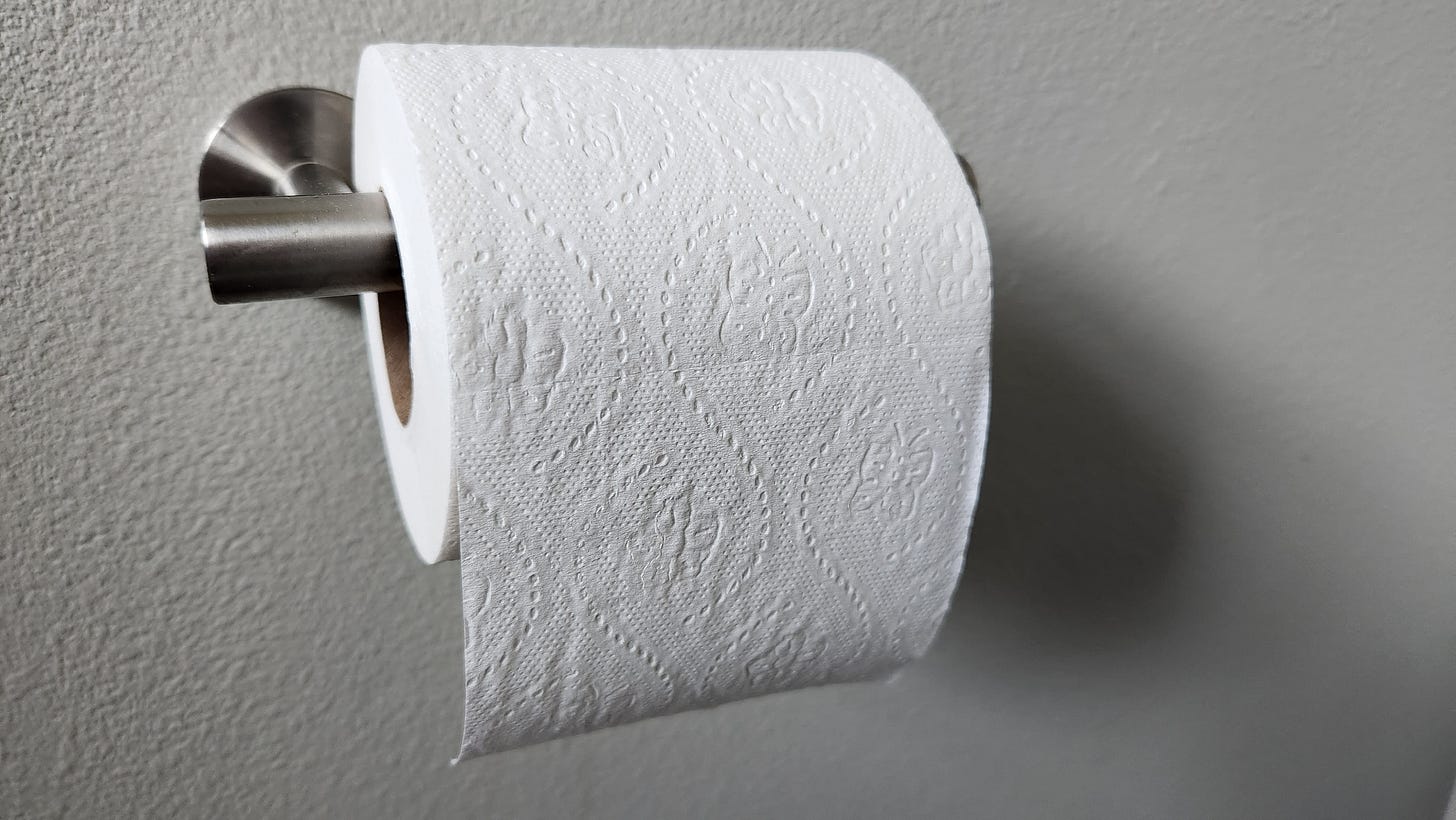A new study published this week was showed that toilet paper is a major contributor to PFAS in wastewater.
Rural Washington State relies heavily on septic systems for sewage treatment and on ground water wells for drinking water. In voluntary testing of public water systems in Washington State, PFAS compounds have been detected in about 10% of them. Could PFAS from our toilet paper be showing up in our drinking water?
Scientists at the University of Florida recruited volunteers from around the world to collect and send in samples of toilet paper. They tested these as well as samples of sewage sludge from eight wastewater treatment plants for 34 PFAS compounds. The abstract states:
In this study, both toilet paper and wastewater sludge were characterized to explore the magnitude of the potential PFAS loading into wastewater systems from toilet paper. In both toilet paper and wastewater sludge, 6:2 fluorotelomer phosphate diester (6:2 diPAP) was the most prevalent PFAS detected, and toilet paper usage was estimated to contribute from 6.4 to 80 μg/person-year of 6:2 diPAP to wastewater–water systems. Our results suggest that toilet paper should be considered as a potentially major source of PFAS entering wastewater treatment systems.
6:2 diPAP is used at paper mills during conversion of wood to pulp. While it is not a compound current tested for in drinking water in Washington, it can break down into more harmful PFAS compounds such as PFOA. However, PFOA and other PFAS compounds of concern in drinking water were found only in trace amounts in the samples tested in the study.
What does that mean for our groundwater and drinking water?
What does that mean for our groundwater and drinking water? The scientists found that toilet paper is estimated to contribute 6.4 to 80 μg/person-year of 6:2 diPAP to wastewater–water systems. Let’s look at the concentration in septic effluent. The average daily domestic water consumption is about 400 liters per day per person, or about 150,000 liters per year. The expected 6:2 diPAP concentration in septic effluent calculates to 0.04 to 0.5 ng/l (parts per trillion). This is unlikely to be a major contributor to PFAS in drinking water.
An alternative calculation is to look at the total amount of PFAS in toilet paper in a population. Island County Washington’s population is about 80,000. The total amount of 6:2 diPAP in a year’s worth of toilet paper is 0.5 to 6.4 grams. This is the amount of PFAS in just 10 - 100 ml of AFFF firefighting foam concentrate.
We need to keep the focus on the major sources such as firefighting foam.
PFAS in toilet paper is a powerful reminder that these compounds are everywhere and should be phased out of commerce. But in dealing with contamination in drinking water, we need to keep the focus on the major sources such as firefighting foam.






Interesting - I did not even know about firefighting foam!